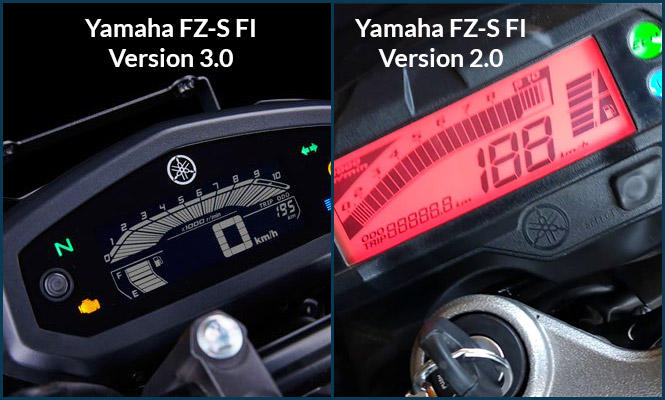



 (4 ratings)
(4 ratings)
Yamaha Motor India has launched the 2019 FZ-S Fi Version 3.0 in the country. The Japanese bike maker asks for INR 97,000 (ex-showroom, Delhi) pricing for this third generation of well-known naked streetfighter in the 150cc-160cc segment. Updated for the 2019 calendar year, the motorcycle went under the knife to get this avatar with a host of new additions. Here in this post, we are focused to highlight differences between the previous generation Yamaha FZ S Fi and the 2019 FZS Fi Version 3.0.
New LED Headlamp:
The first to get noticed headlamp on the 2019 FZS Fi is an all LED unit. It incorporates a reflector with ideal light projection and separate bulbs for high and low beam. The combination here offers excellent visibility over a wider range with less distortion.

Read More: Yamaha FZS V3 Vs Honda CB Hornet 160R
Silhouette:
The body language of the new FZS Fi has been intensified over the earlier model. It now features a forward massive stance which expresses a hidden sense of power. It is attained via sculpted fuel tank with pushed forward look, two-level single seat, compact tail assembly, stubbier exhaust and others. Somewhere it seems like drawing design inspiration from its elder sibling, the Yamaha FZ25.
Single Piece Seat:
The seating on the reworked FZS Fi is a single piece unit as compared to split step-up unit on the outgoing model. This two-level seat comes with an excellent feel of fit and cushioning blends well with an upright, relaxed riding posture.
Front 1 Channel ABS & Disc Brake:
The safety on the 2019 FZS Fi has been improved with the introduction of single-channel ABS and a rear disc brake. This amalgamation of these top-shelf components provides improved braking with better stability and control at all speeds.
Refined Powertrain:
Well, the powertrain is a carried forward unit from Version 2.0. An air-cooled, 4-stroke SOHC, fuel-injected "BLUE CORE" engine. However, the automaker made shorts of electronics adjustments for a refined power delivery while overtaking and a feeling of superior initial acceleration. The power figures and the gearbox unit are the all same units.